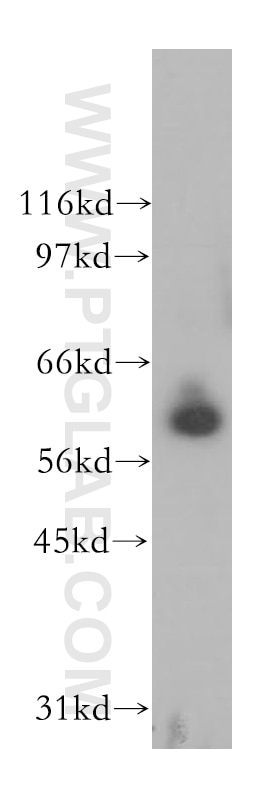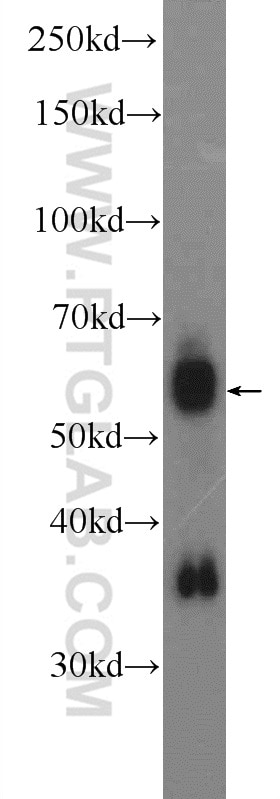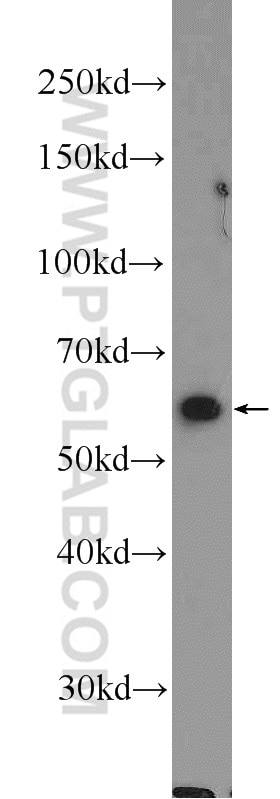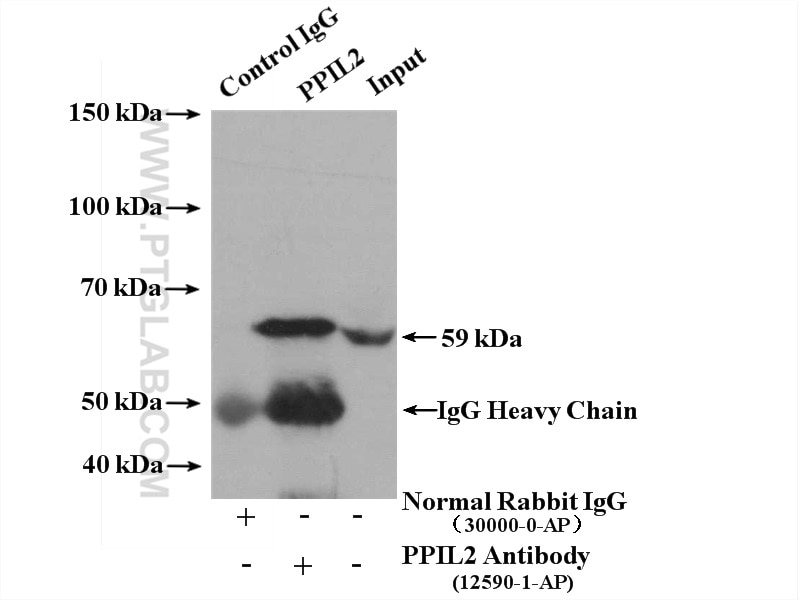PPIL2 Polyklonaler Antikörper
PPIL2 Polyklonal Antikörper für WB, IP, ELISA
Wirt / Isotyp
Kaninchen / IgG
Getestete Reaktivität
human, Maus, Ratte
Anwendung
WB, IP, ELISA
Konjugation
Unkonjugiert
Kat-Nr. : 12590-2-AP
Synonyme
Geprüfte Anwendungen
| Erfolgreiche Detektion in WB | humanes Nierengewebe, HEK-293-Zellen, Mausnierengewebe |
| Erfolgreiche IP | HEK-293-Zellen |
Empfohlene Verdünnung
| Anwendung | Verdünnung |
|---|---|
| Western Blot (WB) | WB : 1:200-1:1000 |
| Immunpräzipitation (IP) | IP : 0.5-4.0 ug for 1.0-3.0 mg of total protein lysate |
| It is recommended that this reagent should be titrated in each testing system to obtain optimal results. | |
| Sample-dependent, check data in validation data gallery | |
Veröffentlichte Anwendungen
| WB | See 1 publications below |
Produktinformation
12590-2-AP bindet in WB, IP, ELISA PPIL2 und zeigt Reaktivität mit human, Maus, Ratten
| Getestete Reaktivität | human, Maus, Ratte |
| In Publikationen genannte Reaktivität | Ratte |
| Wirt / Isotyp | Kaninchen / IgG |
| Klonalität | Polyklonal |
| Typ | Antikörper |
| Immunogen | PPIL2 fusion protein Ag3296 |
| Vollständiger Name | peptidylprolyl isomerase (cyclophilin)-like 2 |
| Berechnetes Molekulargewicht | 520 aa, 59 kDa |
| Beobachtetes Molekulargewicht | 59 kDa |
| GenBank-Zugangsnummer | BC028385 |
| Gene symbol | PPIL2 |
| Gene ID (NCBI) | 23759 |
| Konjugation | Unkonjugiert |
| Form | Liquid |
| Reinigungsmethode | Antigen-Affinitätsreinigung |
| Lagerungspuffer | PBS with 0.02% sodium azide and 50% glycerol |
| Lagerungsbedingungen | Bei -20°C lagern. Nach dem Versand ein Jahr lang stabil Aliquotieren ist bei -20oC Lagerung nicht notwendig. 20ul Größen enthalten 0,1% BSA. |
Protokolle
| PRODUKTSPEZIFISCHE PROTOKOLLE | |
|---|---|
| WB protocol for PPIL2 antibody 12590-2-AP | Protokoll herunterladen |
| IP protocol for PPIL2 antibody 12590-2-AP | Protokoll herunterladen |
| STANDARD-PROTOKOLLE | |
|---|---|
| Klicken Sie hier, um unsere Standardprotokolle anzuzeigen |





